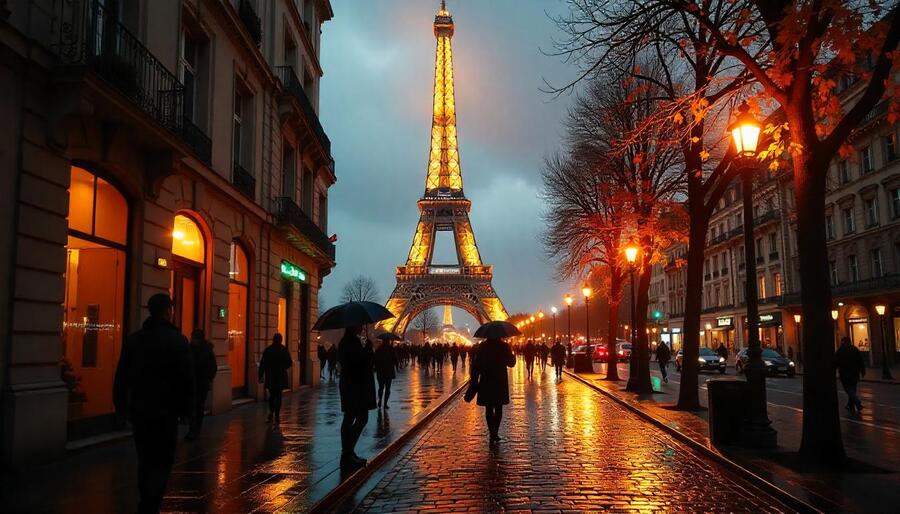≡-France Historic Museums To Boost With New Ticket Prices For Non-EU Visitors Starting 2026 – Viral of Today
<> Viral of Today <>
Home » France Travel News » France Historic Museums To Boost With New Ticket Prices For Non-EU Visitors Starting 2026 Monday, June 2, 2025Starting in 2026, France will increase ticket prices at many of its historic museums and landmarks for visitors from outside the European Union. This decision comes as a response to reduced government funding and the rising costs of preserving and maintaining centuries-old cultural treasures like the Palace of Versailles and the Louvre. By asking non-EU tourists to pay higher admission fees, French institutions aim to secure much-needed revenue to fund essential renovations and keep these iconic sites accessible for future generations.Prepare to Pay More: France to Increase Museum and Monument Entry Fees for Non-EU Visitors Starting 2026If your travel plans include wandering through the iconic Hall of Mirrors at the Palace of Versailles or marveling at masterpieces in the Louvre, there’s an important update you need to know for trips from 2026 onward. France is set to raise entry fees for many of its world-renowned museums and heritage sites, and non-European Union visitors will feel the pinch most — with ticket prices climbing as high as €30 for some major attractions.What’s Changing?Starting in 2026, some of France’s most beloved cultural landmarks will introduce steeper admission fees specifically targeting travelers who don’t hold an EU passport. This list includes the legendary Palace of Versailles, the ornate Garnier Opera House in Paris, the grand Château de Chambord, and several other high-profile destinations. These increases will affect the millions of international tourists who come each year on standard short-stay visas, while EU residents, French citizens, and long-term visa holders will continue to enjoy current pricing or exemptions.The rationale behind this policy is straightforward: with shrinking government subsidies and rising maintenance costs, these historic sites need to find new revenue streams to finance urgent restoration work and ongoing upkeep. The days of relying heavily on public funding are fading, and tourists from beyond the EU are now expected to contribute more directly to preserving these cultural treasures.Why the Fee Hikes?Maintaining centuries-old palaces, museums, and opera houses is a costly endeavor. Take Château de Chambord, for example — it faces an estimated €100 million in renovation needs over the next decade alone. Fixing just one section of this grand Renaissance castle requires a hefty €25 million investment. Meanwhile, the Louvre Museum, home to thousands of priceless artworks, has plans for an extensive refurbishment that could total nearly €900 million.At the same time, the French government is tightening its purse strings. The Ministry of Culture has seen budget cuts amounting to €150 million this year, forcing heritage institutions to operate under increased financial pressure. With less public money available, these sites are turning to their visitors—especially the lucrative international tourist market—to help bridge the funding gap.Who Will Pay More?This policy targets non-EU tourists who typically enter France on the standard 90-day Schengen visa or similar short-term permits. Visitors with proof of French residency or holders of long-term visas will not be subject to the increased fees. This means frequent travelers living in France or long-stay expatriates will continue to benefit from current or reduced prices, while casual visitors from outside the EU will see higher admission costs.Is This Fair or Discriminatory?The announcement has sparked debate. Some critics argue the move is unfair and discriminatory, claiming that access to cultural heritage should be universal regardless of nationality. They worry that raising fees exclusively for non-EU visitors creates barriers to experiencing French history and art, potentially discouraging international tourism.However, this isn’t the first time entry policies have varied based on visitor categories. For years, European Union residents under the age of 26 have enjoyed free admission to national museums, and local residents often benefit from discounted or complimentary entry. These measures have always reflected a balance between fostering access and generating sustainable revenue.In the broader context, this pricing adjustment reflects the financial realities faced by heritage sites struggling to preserve their collections and buildings amid limited public funding. It’s less about exclusion and more about sharing the burden of upkeep with the global visitors who benefit from experiencing these landmarks.What Does This Mean for Your Trip?If you’re planning a French vacation for 2026 or later, expect to allocate a bit more of your budget to cover these ticket increases. For families or groups, the additional costs may add up, so advanced planning will help avoid surprises at the entrance gates.That said, the hike in admission fees is unlikely to deter most travelers from visiting iconic sites like Versailles or the Louvre. These landmarks remain bucket-list experiences for millions worldwide, and their cultural and historical significance continues to draw crowds. Visitors may just need to be mindful of the extra expense and perhaps indulge in an extra croissant or two to soften the blow.Looking AheadAs France’s cultural institutions adapt to new funding challenges, the shift toward greater financial self-sufficiency among museums and heritage sites could become a broader trend. Tourists worldwide may find themselves paying more for access to historic sites in other countries too, especially as governments reevaluate how best to sustain preservation efforts amid competing budget priorities.For now, the message is clear: if you dream of stepping inside France’s most treasured palaces and museums, starting in 2026, prepare to contribute a bit more to the cost of keeping these magnificent places standing strong for generations to come.Starting in 2026, France will raise ticket prices for non-EU visitors to help cover the growing costs of preserving its historic museums and landmarks amid shrinking government support.If you want to enjoy these iconic French experiences without breaking the bank, consider purchasing tickets in advance, exploring combo passes, or timing your visit during free-entry days if available. And above all, savor every moment of walking through history — even if it comes at a slightly higher price.
This information will surprise you!
See also
- Read until the end to discover everything.
- Important information you need to know.
- Interesting facts and helpful tips.
Conclusion
Did you enjoy the news? Keep following us daily!













